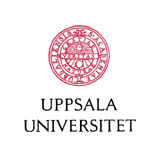|
Resource Allocation and Control Signaling in the WINNER flexible
MAC Concept.
Mikael Sternad
, Uppsala University,
Tommy Svensson
,
Chalmers U. of Technology and
Martin Döttling
, Nokia Siemens Networks
IEEE 68th Vehicular Technology Conference VTC 2008-Fall,
Calgary, Canada, September 2008.
© 2008 IEEE
-
Abstract:
- The EU WINNER projects have studied OFDM-based
packet data systems beyond 3G that use adaptivity on all
time-scales to obtain high flexibility and performance.
The adaptive transmission in both downlink and uplink
is scheduled and controlled at base stations and relay nodes
and requires frequent transmission of control
information over the downlink.
The use of scheduling, adaptive modulation and coding,
with fine granularity in both time and space,
could potentially result in unrealistic bandwidth
demands for such downlink control signaling.
The present paper describes how this problem has
been handled within WINNER in two cases:
Frequency-adaptive transmission, which allows
individual link adaptation within time-frequency
resource units and non-frequency adaptive transmission,
which averages over the channel variations in the
frequency domain.
An important tool for limiting the associated control
information is to broadcast only a small essential
set of control data to all user terminals, using a
safe but therefore bandwidth-demanding code rate.
The remaining control information is multicast to
groups of users with different signal to interference
and noise ratios (SINRs). The modulation and code rates
of these transmissions are adjusted to the SINRs of these groups.
The over-all coded data rate of the control transmission
can thereby be reduced to acceptable levels.
-
Related publications:
-
Proc. of the IEEE (Dec. 2007)
invited paper on
adaptive transmission in beyond-3G wireless systems.
-
WINNER II System Concept,
brief overview, ICT Mobile Summit 2008.
-
Non-frequency adaptive transmission:
Description of B-IFDMA allocation scheme.
-
Frequency-adaptive transmission:
Adaptive TDMA/OFDMA design and performance.
-
Source:
-
Pdf, (242K)
|
WINNER project
|
The Wireless IP Project
|
Main
entry in list of publications
|
This material is posted here with permission of the IEEE.
Such permission of the IEEE does not in any
way imply IEEE endorsement of any of Uppsala University's
products or services.
Internal or personal use of this material is permitted.
However, permission to reprint/republish this material for
advertising or promotional purposes or for creating new collective
works for resale or redistribution must be obtained
from the IEEE by writing to [email protected].
By choosing to view this document, you agree to all
provisions of the copyright laws protecting it.
|

